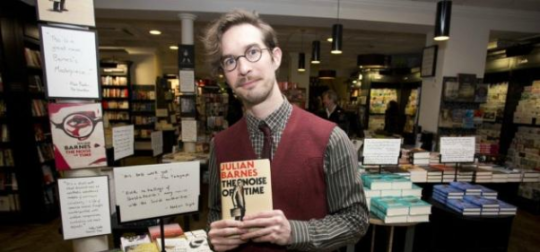By Hannah Spruce, High Speed Training

While austerity and recession continue to hit people hard, customers are choosing to spend their cash with brands they trust.
The question is, how do you make your business one that customers want to spend money with?
Smart companies are turning to a customer-centric approach. And it works.
Growing businesses tend to have one trait in common; they focus on customer needs. These are companies like Amazon who want to be “Earth’s Most Customer-Centric Company”. And in 2015, they generated $107 billion. So it seems like their plan is working.
Amazon revolutionised the way they did business by thinking first and foremost about what the customer wants.
By doing this Amazon built themselves a lasting competitive advantage because they not only understand the wants, needs, and behaviours of their customer base now, they anticipate their future needs too.
What Makes A Company Customer-Centric?
Customer-centric businesses use data to understand the needs and values of their customer base. Then, they orientate their business around this data and make sure that everything they do fulfils a customer desire. Their staff reinforce their values and culture every day. And they keep focusing their planning and strategy around the customer.
Interacting with a customer-centric business is a joy.
They leave you surprised like “oh, that was easy!” and you go back because they make your life easier, quicker or more enjoyable.
Since we’re all different, the kind of customer-centric businesses that give me the warm consumer fuzzies, aren’t the same ones that will delight you.
I’m from the UK and the businesses I love, reflect that. But, location doesn’t matter; the concept’s the same: focus on what your customers want and you’ll outperform your competitors.
First Direct
First Direct is the most loved Bank in the UK in a time when people aren’t fans of banks or bankers.
I just switched to First Direct over another bank and on paper that could look like a bad decision because the other bank offers a higher monetary incentive to switch.
So, objectively, on paper, what am I thinking?
I mean, we all want extra money… but
I forfeited actual, real, money because First Direct is legendary for their customer service*. And that’s what matters.
First Direct can get away with offering less money to switch because they know they have other incentives.
Like their customer service and focus on real people. That’s why First Direct gets to boast that it’s “Britain’s most recommended bank.”
“This bank was built on service,” says Sharon Dawson, the head of First Direct’s customer marketing. Conceptualised in 1989, the bank was built around customer needs.
Telling Money Saving Expert, the unexpected bank’s story, Dawson claims that “Project Raincloud” (as it was known back then) originated from some senior execs and “a piece of paper” where “literally the only thing on the paper was “customer” in the middle of it.”
First Direct have won countless awards (seriously, I’m not counting them, I mean, there’s loads) that cement their place as the best, friendliest, and most trusted bank.
*I’m also a big fan of Barry that weird platypus in their advert and you know, a platypus never hurts.

[Source: First Direct]
Waterstones
Everyone said that the rise of Amazon and e-books would put an end to high street bookshops.
But while other high street bookshops are flailing, against all the odds, Waterstones has reported its first growth in sales since the e-book and Amazon market domination.
Which is weird, because you can buy books for a lot cheaper, I mean, seriously, A LOT cheaper on Amazon.
And this is way more than just the underdog effect.
Despite Amazon being cheaper, Waterstones has carved their space in the market by cultivating a customer experience that Amazon can’t offer.
We’re talking sofas, we’re talking events, creative shelves and displays, friendly staff, and we’re especially talking about those personalised notes that recommend you books. That’s a touch you don’t get anywhere else.

[Source: Islington Gazette]
They even turned their Picadilly bookstore into a Hogwartian wonderland to celebrate the launch of Harry Potter and The Cursed Child.

[Source: Pottermore]
They’re winning because they did what the others couldn’t do.
They targeted the wants and desires of customers who still wanted to walk into a bookstore. They hired staff who care, who know their books and I mean, really know their books. So that the conversations are never small talk, but always real opinionated human stuff.
Becoming a customer-centric company can be tough, especially if it wasn’t your goal from the start. But businesses like First Direct and Waterstones show that the way to weather a tough economy, bad press or new competition is by focusing on what your customers want from you.






